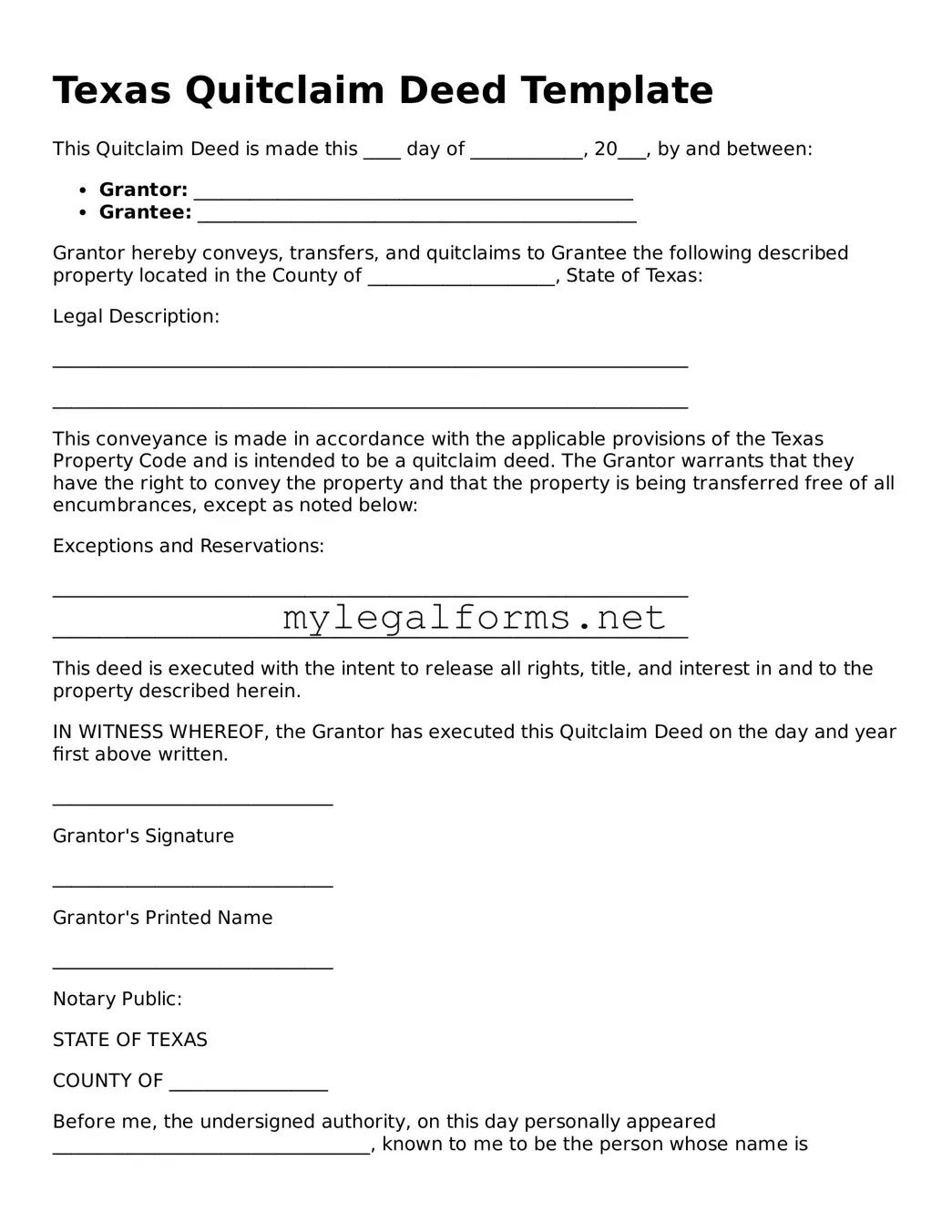Texas Quitclaim Deed Template
This Quitclaim Deed is made this ____ day of ____________, 20___, by and between:
- Grantor: _______________________________________________
- Grantee: _______________________________________________
Grantor hereby conveys, transfers, and quitclaims to Grantee the following described property located in the County of ____________________, State of Texas:
Legal Description:
____________________________________________________________________
____________________________________________________________________
This conveyance is made in accordance with the applicable provisions of the Texas Property Code and is intended to be a quitclaim deed. The Grantor warrants that they have the right to convey the property and that the property is being transferred free of all encumbrances, except as noted below:
Exceptions and Reservations:
____________________________________________________________________
____________________________________________________________________
This deed is executed with the intent to release all rights, title, and interest in and to the property described herein.
IN WITNESS WHEREOF, the Grantor has executed this Quitclaim Deed on the day and year first above written.
______________________________
Grantor's Signature
______________________________
Grantor's Printed Name
______________________________
Notary Public:
STATE OF TEXAS
COUNTY OF _________________
Before me, the undersigned authority, on this day personally appeared __________________________________, known to me to be the person whose name is subscribed to the foregoing instrument, and acknowledged to me that they executed the same for the purposes and consideration therein expressed.
Given under my hand and seal of office this ____ day of ____________, 20___.
______________________________
Notary Public Signature
My Commission Expires: ___________________
